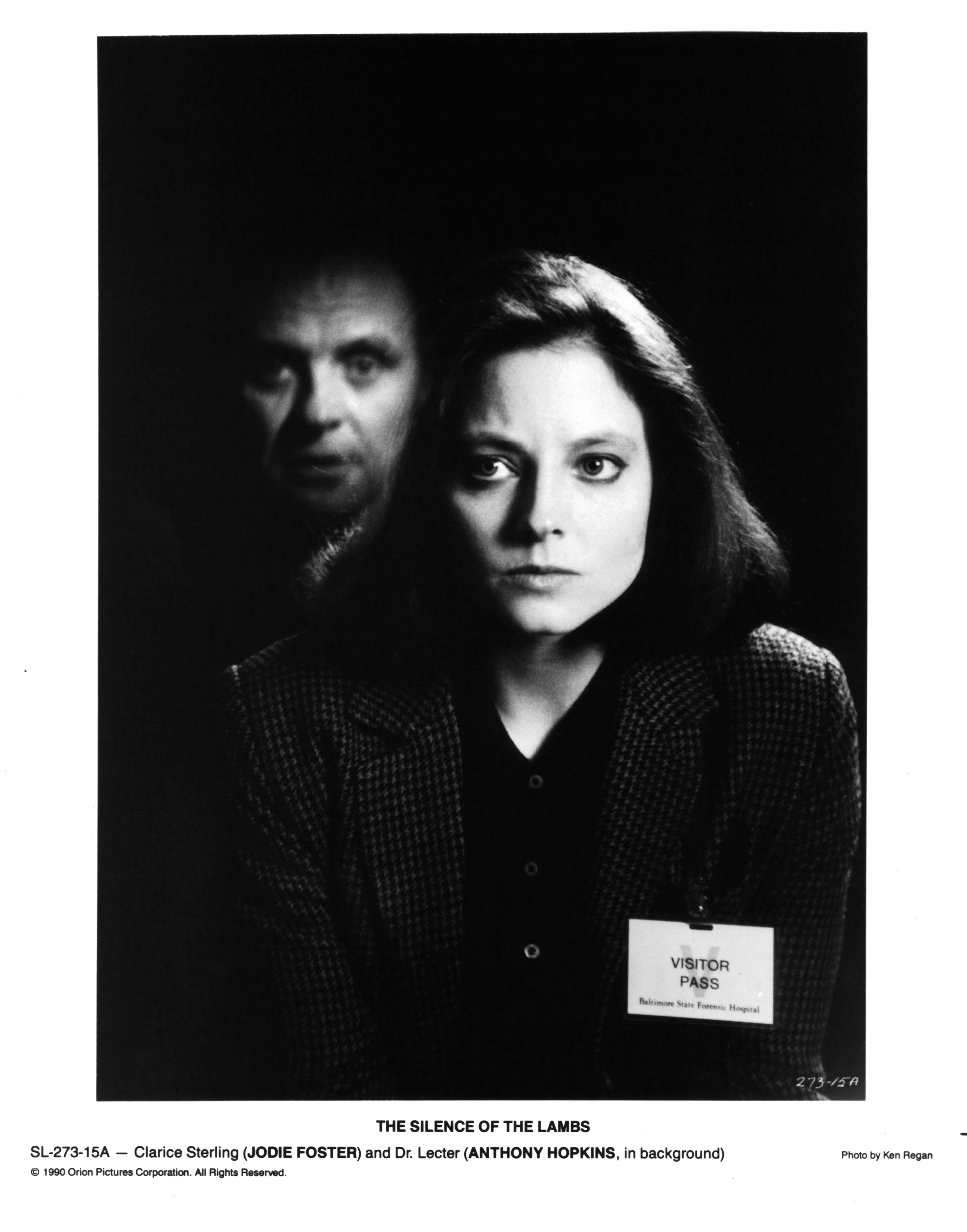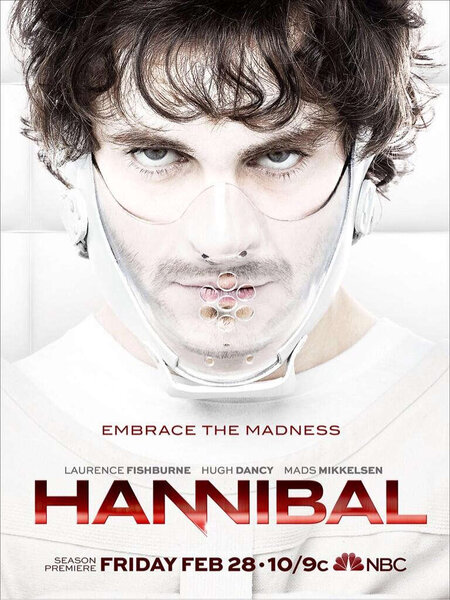Create a free profile to get unlimited access to exclusive videos, sweepstakes, and more!
Every movie and TV show set in the bloody Hannibal Lecter universe, ranked

For 40 years, Dr. Hannibal Lecter has haunted and tantalized audiences.
In 1981, with his disturbing novel Red Dragon, author Thomas Harris created a character as charming and educated as he was psychotic. Dr. Lecter’s ruthless crime spree, on both the big and small screens, helped solidify the cunning serial killer as one of the greatest villains ever made. Four actors would go on to play the iconic role, across five movies and one hell of a TV series.
As Ridley Scott’s Hannibal celebrates its 20th anniversary this year, The Silence of the Lambs its 30th, and CBS airs Clarice this week, we braved all of Lecter’s live-action exploits to provide a definitive ranking of his best and worst.
06. Hannibal Rising (2007)
Producer Dino De Laurentiis spent years looking for ways to milk his rights to the character of Hannibal Lecter. The legendary producer would prod Thomas Harris to create more source material that Hollywood could adapt into movies, which led to the rushed publication of Harris’ Hannibal Rising novel. And just like the book, the movie that followed would further dilute the IP in irrevocable ways.
Hannibal Rising fleshes out (no pun intended) a flashback in the Hannibal novel centered on young Hannibal, his sister, and the disgusting and tragic role the Nazis played in her demise. Released soon after Batman Begins and Casino Royale showed Hollywood that origin stories could be very profitable, Rising centers on the beginnings of young Hannibal’s cannibalism as a result of witnessing Nazis dine on his baby sibling. Gaspard Ulliel gives an uninspired and rote performance in the role as the movie explores the backstory of one of cinema’s greatest villains with slightly less energy than waiting in the line at the DMV. (Bookend scenes featuring Sir Anthony Hopkins as Lecter were dropped from the final cut.) The only good thing to come out of Hannibal Rising was the material it provided for Bryan Fuller’s Hannibal TV series.
05. Hannibal (2001)
Ridley Scott took over directing duties from The Silence of the Lambs’ Jonathan Demme when the late filmmaker — and his Clarice Starling, Jodie Foster — passed on adapting Harris’ lurid and grotesque 1999 book sequel to Silence. Scott, with help from screenwriters David Mamet and Steven Zaillian, embraced most of the book’s more slasher film-esque tendencies, following FBI Agent Starling (Julianne Moore) as she’s forced to cross paths once again with the infamous Dr. Lecter (Hopkins) when one of his victims, the deformed Mason Verger (Gary Oldman), plots his revenge.
The sequences that take place in Florence, Italy — where a fugitive Lecter poses as a library curator — give Hannibal a strong dose of gothic horror, but the rest of the movie doesn’t live up to that section. Instead, the film comes across as a very expensive, very bloody B-horror movie. Hannibal is an absurd, melodramatic gore-fest that boils down two of the most fascinating and iconic characters ever to their most basic and uninteresting essence. (You can see why most of the talented people responsible for The Silence of the Lambs passed on this sequel.)
Scott seems to relish adapting the more obscene and schlock-y elements of Harris’ source material, which was just as divisive and problematic when it was published as the movie is. It’s no surprise that Hannibal fell short of the quality of a classic like Lambs, but it is surprising how disappointing that fall proved to be.
04. Red Dragon (2002)
If the marketing was to be believed, Red Dragon seemed poised to restore the world of Hannibal Lecter to its former Silence of the Lambs glory. The movie was designed from the jump to be a more faithful adaptation of Harris’ Red Dragon novel (previously adapted as Michael Mann’s Manhunter in 1986), with Silence screenwriter Ted Tally returning. Hopkins returned once again, anchoring an impressive ensemble cast: Edward Norton, Harvey Keitel, Ralph Fiennes, and Emily Watson. The movie even brought in Mann’s Manhunter cinematographer, Dante Spinotti. So why is this Silence of the Lambs prequel such a noble misfire?
Blame director Brett Ratner. The (at best) journeyman filmmaker proved a poor match for the material, unable to deliver the levels of suspense and thrills the story requires. It’s the movie equivalent of painting by numbers, but trying to make up for any artistic shortcomings by copying from the artists that came before. Everything feels “off,” which only reinforces the obvious attempts at uninspired imitation. Large chunks of this supposed thriller frustratingly lack tension, especially in a clunky choreographed climactic shootout between Norton’s FBI profiler Will Graham and Fiennes’ sadistic killer, the Tooth Fairy. (Fuller’s Hannibal series would find a more satisfying way to re-interpret this material.) The movie’s best moments are its final ones, which find a nifty way to connect Red Dragon to Silence. If only the rest of the movie was as thrilling as its climactic endnote.
03. Manhunter (1986)
Michael Mann's neon-lit adaptation of Harris’ Red Dragon is a slow-burn, over-masculine procedural that puts the hunt for the deranged Tooth Fairy killer (Tom Noonan) through a gritty lens. Mann’s take on the material is faithful to the spine of the novel but takes certain narrative liberties — most notably changing the spelling of Brian Cox’s Dr. Lecter to "Lecktor" — that allows for a more bold and heightened experience in line with Mann’s then-Miami Vice sensibilities.
The movie is a decent, if unspectacular, thriller with one notable shortcoming: its leading man, William Petersen. Cast as the FBI profiler Will Graham, a character that is supposed to be almost supernaturally talented with his gifts to deeply empathize with a killer’s mindset, Petersen comes off as less haunted and more in need of a nap.
02. Hannibal (2013-2015)
"This is my design."
Will Graham’s signature catchphrase in this cult favorite might as well serve as both the series and its showrunner’s mantra. Writer and showrunner Bryan Fuller somehow pulled off the near-impossible with his bloody, stylized, and emotionally gripping adaptation of Harris’ works: He revitalized a then-tainted IP in a way that honored what came before while carving his own inspired and inventive take that was unlike anything audiences had seen.
The fact that Fuller pulled all this off with an R-rated franchise, on network television, is even more impressive. The NBC series’ first two seasons are its best, while its third and (for now) final season was marred by uneven patches in the complicated and gory relationship between profiler Will Graham (Hugh Dancy) and Dr. Lecter (Mads Mikkelsen). Due to complicated rights issues, Hannibal could not feature the Clarice Starling character (though Fuller did a version of her with a brief storyline involving Veep’s Anna Chlumsky as a newbie agent). But Hannibal the series proved that it didn’t need Clarice or The Silence of the Lambs to be successful. By grounding the story in the violent and increasingly tragic codependency between Will and Hannibal, Fuller executes a “greatest hits” of sorts from Hannibal Lecter’s catalog — one full of bold choices that its stars are more than game for.
By the end of the series' frustratingly short run, it had become one of the most artistically uncompromised shows in television history. Instead of being a bloodier, sleeker CSI, this procedural doubled down on feature film-quality visuals and macabre viscera; a show featuring characters that broke your heart as often as it presented some of those characters eating actual hearts. Equal parts gorgeous and unsettling, abstract and vivid, Hannibal is a near-hypnotic, horrifying ode to the works of Thomas Harris. One that left the airwaves with plenty of story left to tell. Hopefully, one day, it will get the chance to tell them.
01. The Silence of the Lambs (1991)
Three decades later, The Silence of the Lambs still holds up; it is a masterpiece and one of the most frightening films ever made.
The only horror movie to win the Oscar for Best Picture, The Silence of the Lambs is a clever and haunting adaptation of Harris’ literary sensation, thanks to Ted Tally’s expert script and director Jonathan Demme’s deft hand. Demme’s unique camera choices, particularly those where characters seem to look into the lens, make the neck hair-raising intensity of the novel more palpable but no less intense. (In particular, the final 15 minutes, which will have you white-knuckling your armrest to this day.)
Jodie Foster and Anthony Hopkins give nuanced performances in roles that could easily come off as flat archetypes. (While Hopkins returned to the role a few times since, nothing tops his Oscar-winning, star-making turn here.) But it's the late, great Demme's direction — which is as nuanced as it is sensational — that truly elevates the movie beyond its more genre trappings. His stylistic touches infuse the film with an unyielding immediacy and uncomfortable intimacy, which perfectly mirror the psychology that underscores Harris’ novel. Exploring the inner lives of the characters, especially Starling, is clearly more compelling to Demme than the horror — which helps make the scarier moments that much more impactful.
Everything takes place at human height; that way, every panicked breath Starling takes or victory she struggles to earn feels like one of our own. As a result, Silence’s more operatic elements never reach the excess of Ridley Scott’s Hannibal, deferring to a more emotionally honest take on the material that has helped give the film such an impressive — and deserved — shelf life.



























